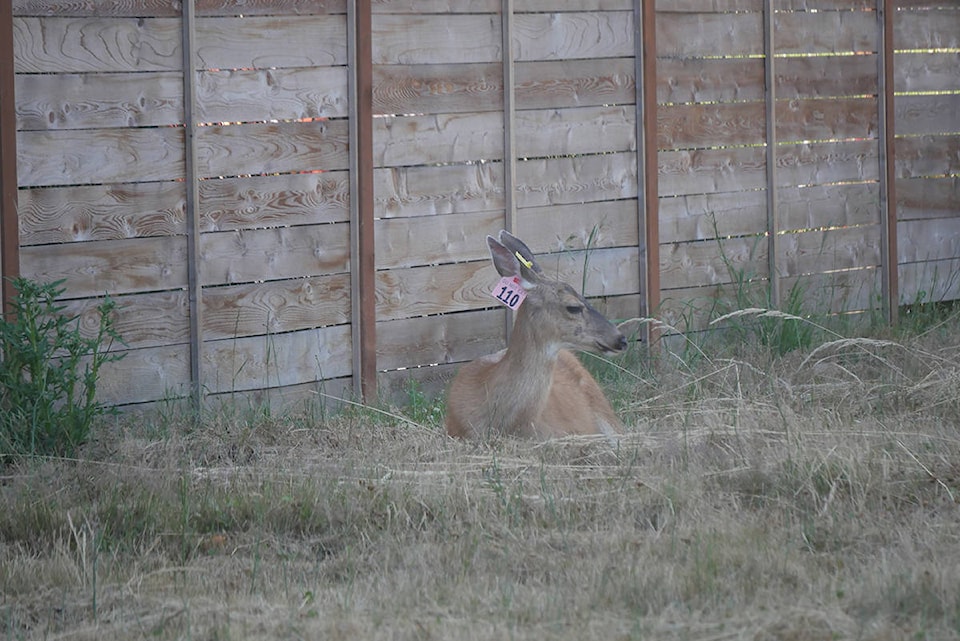As the District of Oak Bay continues to monitor the local deer population this summer, residents are perhaps wondering why some deer are wearing “do not eat” tags.
Data collection using 39 remote cameras will continue until summer’s end to ensure an accurate analysis of the deer. The last analysis was conducted in June, with fawning starting in April and potentially lasting as late as August.
According to Urban Wildlife Stewardship Society (UWSS) president Kristy Kilpatrick, this is the first instance of high-level camera-based research being conducted in an urban area.
Kilpatrick said scientists are in the process of preparing an official report to reflect the density, fawning rate and habitat use of Oak Bay’s deer population.
ALSO READ: City of Victoria ready to donate $250,000 to Kings Road green space project
A total of 120 does were vaccinated between fall 2019 and fall 2020 as part of the District of Oak Bay’s immuno-contraception program. All does received their first dose in 2019, with some receiving a booster in 2020 and others still waiting.
Immuno-contraception remains the most effective option for population control – neutering bucks would be largely impractical, as just one un-neutered buck could impregnate numerous does.
“To really determine the impact of (immuno-contraception) is an ongoing process that requires anywhere between three to five years to see the decline in birth rate,” said Kilpatrick.
The large but lightweight GPS collars initially fitted on 20 deer were later ruled too expensive and ineffective compared to the camera surveillance system. A smaller, less invasive pink collar and two pink ear tags were also placed on doe to signify that they had not undergone immuno-contraception, allowing them to be identified from either side.
Tag colours are changed weekly to weed out does that have still not received their booster. Any deer previously handled and released will also sport a provincially-required tag that reads “do not eat.”
Kilpatrick said UWSS strives to better educate residents about deer and that the behaviour of doe in fawn season should be considered protective, not aggressive.
“The end goal is to provide a tool to other communities that establishes a sustainable, economical, long-term solution for deer.”
The Township of Esquimalt plans to implement a similar approach for its deer population and will benefit from data collected in Oak Bay.
ALSO READ: Music returns to Willows in Oak Bay with Soul Shakers
“The comments that we’ve had have been of concern, we’ve had the most compassionate team of professionals that handle the wildlife and the foremost consideration is always the deer themselves,” she said, adding that UWSS follows up on reports of deer collars being too tight.
For more information on the local deer population, visit oakbay.ca.
